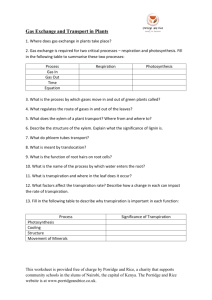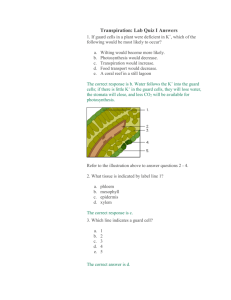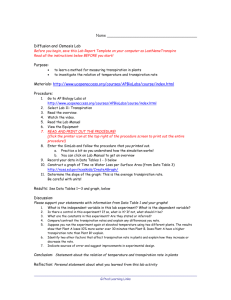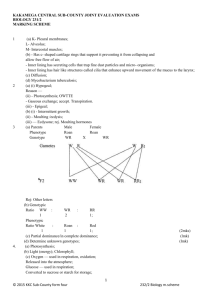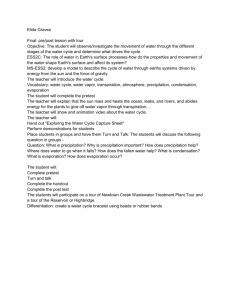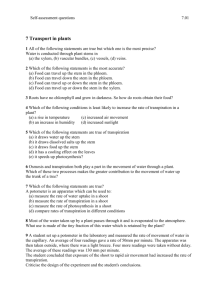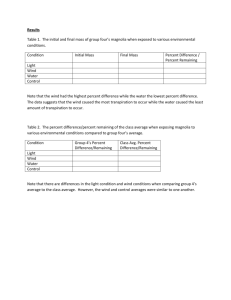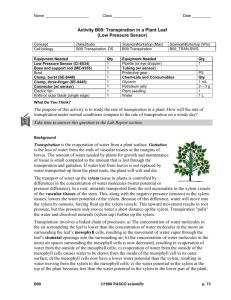Quiz 3 Botany for Gardeners Describe 3 differences between
advertisement
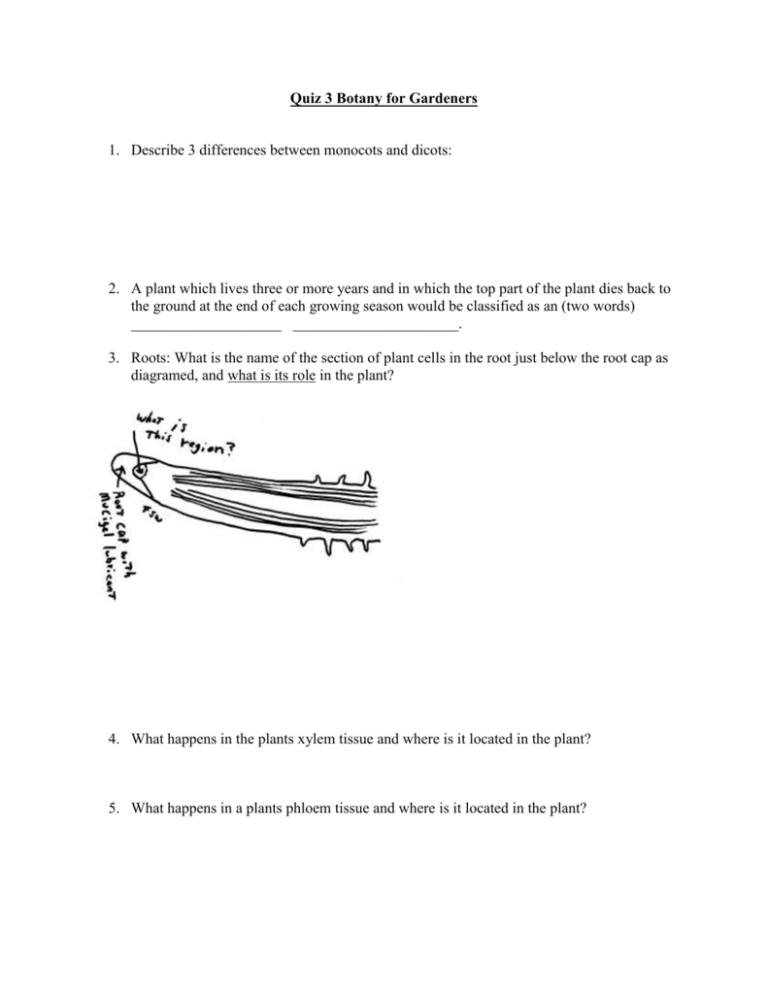
Quiz 3 Botany for Gardeners 1. Describe 3 differences between monocots and dicots: 2. A plant which lives three or more years and in which the top part of the plant dies back to the ground at the end of each growing season would be classified as an (two words) ____________________ ______________________. 3. Roots: What is the name of the section of plant cells in the root just below the root cap as diagramed, and what is its role in the plant? 4. What happens in the plants xylem tissue and where is it located in the plant? 5. What happens in a plants phloem tissue and where is it located in the plant? 6. Transpiration: Please Describe how water: a. enters a plant: b. travels through it: c. is lost through evaporation/transpiration: 7. How do the following influence: increase/decrease, etc evaporation/transpiration? a) High Humidity b) Windy conditions c) Cloudy day d) Cold Temperatures 8. Corn flowers are (monoecious, dioecious, trioecious) and how did you determine that? 9. What is photosynthesis, name four inputs necessary for it to occur and where does it take place in the plant? 10. What is respiration and where does it take place in the plant? Quiz 3 Answer Page 1. Describe 3 differences between monocots and dicots: Monocots # of cotlyledons Leaf vein pattern: Flower part in multiples of: Vascular tissue arrangement: 1 parallel veins 3 in scattered bundles Dicots 2 branched veins 4-5 in a ring just below the bark surface 2. A plant which lives three or more years and in which the top part of the plant dies back to the ground at the end of each growing season would be classified as an (two words) Herbaceous Perennial. 3. Roots: What is the name of the section of plant cells in the root just below the root cap as diagramed, and what is its role in the plant? Root Meristem (Meristematic Region): Active cell division takes place laying new cells behind the root cap, which forces the root cap out (grows) out into new areas of the soil. 4. What happens in a plants xylem tissue and where is it located in the plant? What Happens: Water and nutrients are conducted up from the roots, through the stems, and what is not used in cellular processes or is taken up in the leaves as an ingredient of photosynthesis, exits via the plants stomates Where in the Plant: Cambium (the meristematic zone of the vascular system) lays new xylem cells towards the inside of the plant. Water and nutrient are transported in the xylem vessels (long tubes). 5. What happens in a plants phloem tissue and where is it located in the plant? What Happens: Sugars made via photosynthesis in the plants leaves are translocated throughout the plant. Where in the Plant: Cambium (the meristematic zone of the vascular system) lays new phloem cells towards the outside of the plant. Sugars created in the leaves through photosynthesis are transported in the phloem vessels (long tubes). 6. Transpiration: Please Describe how water: a) enters a plant: Through the roots via osmosis: the root cells create a salty environment, drawing water and soil nutrients through the semi-permeable membrane. b) travels through it: Capillary action – water adheres to and rises in long thin tubes of the xylem c) is lost through evaporation/transpiration: Exits the plant through the stomata via evaporative transpiration. 7. How do the following influence either increase or decrease evaporation/transpiration? a. High Humidity – slows evaporation/transpiration b. Windy conditions – increases evaporation/transpiration c. Cloudy day – evaporation/transpiration is slower than on a sunny day d. Cold Temperatures – evaporation/transpiration is lower/slower in cooler weather 8. Corn flowers are (monoecious, dioecious, trioecious) and how did you determine that? Monoecious (one house): Separate male and female flowers present on the same plant 9. What is photosynthesis, name four inputs necessary for it to occur and where does it take place in the plant? Photosynthesis: photo meaning light – synthesis to put together, literally a putting together by light. Carbon Dioxide, Water, Sunlight (energy), and Chlorophyll are the 4 ingredients. Photosynthesis takes place in the leaves of green plants. 10. What is respiration and where does it take place in the plant? Respiration is a “taking apart” of sugars (opposite of photosynthesis) to release energy to do work in the plant. Respiration takes place in every living cell all the time.
